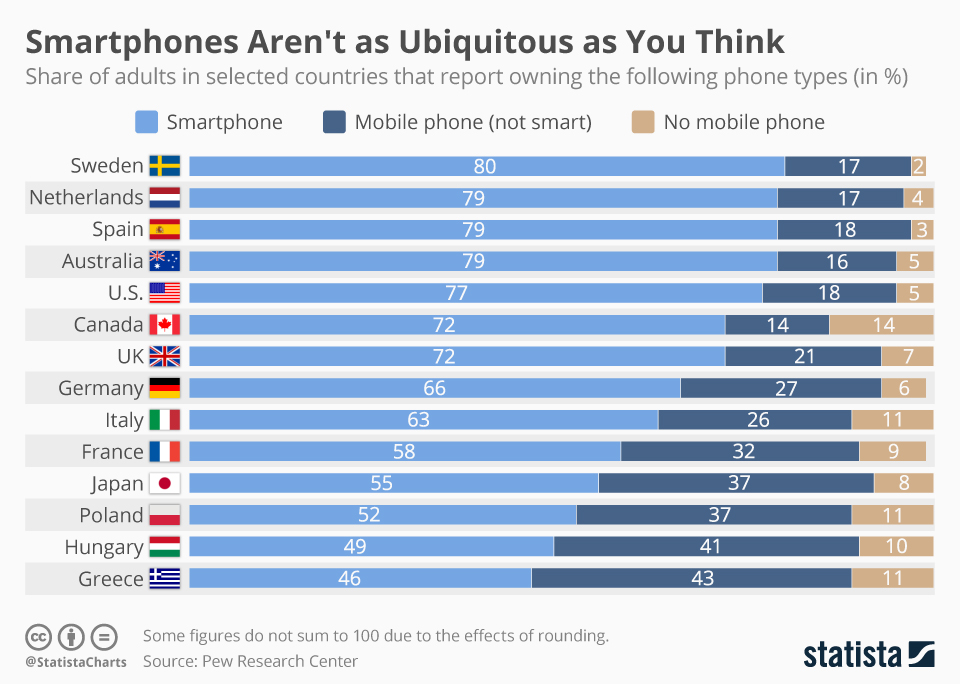When walking through any public space, one gets the impression that each and every person is using a smartphone. A new survey shows, however, that this is an optical illusion.
In Germany, for instance – undoubtedly a rather saturated market – only two out of three adults own a smartphone. An additional 27 percent have a normal mobile phone (also known as a feature phone in the jargon, while the remaining 6 percent have no mobile phone at all. In comparison to the rest of Europe, North America, Australia and Japan, this means that Germany lies somewhere in the middle of the pack, according to a study conducted by US market researchers at the Pew Research Center, for which the data was gathered over the course of 2016.
Amongst the 14 advanced economies surveyed by Pew’s experts, Sweden, the Netherlands, Spain and Australia lead the world in smartphone ownership with around 80 percent each. At the back end of the list Poland (52 percent) is closely followed by Hungary and Greece, where not even every second adult reported owning a smartphone. In these three countries, as well as Japan, conventional mobile phones are still commonplace.
Generally, the researchers at Pew detect a digital divide in the use of mobile phones. The younger, the more educated and the higher the income above median for the country, the more likely users of mobile devices are to have smartphones (by the way, this is also true according to a separate study across the globe and not only in wealthier countries). The gender of smartphone owners*, on the other hand, plays no role in the distribution – except in Japan, where men (69 percent) are more likely to have smartphones than women are (49 percent).
 You will find more infographics at Statista
You will find more infographics at Statista
The Pew statistics do underline one thing clearly: anyone planning to reach as many mobile phones as possible can’t simply rely on the fact that a smartphone with the internet and apps will surely be waiting on the other end. What certainly works in all cases – as long as the phone is switched on and connected to the network, of course – is the lowest common denominator, an SMS.
Airlines notify passengers about changes to departure times, delivery services inform recipients that their orders have been dispatched, banks send their customers mTANs and online services transmit access details for two factor authentication – in a growing number of business operations SMS is now providing valuable services. With Retarus’ Cloud SMS Services you can communicate directly from all systems and in all networks. Find out more about these services here or directly from your local Retarus contact person.




